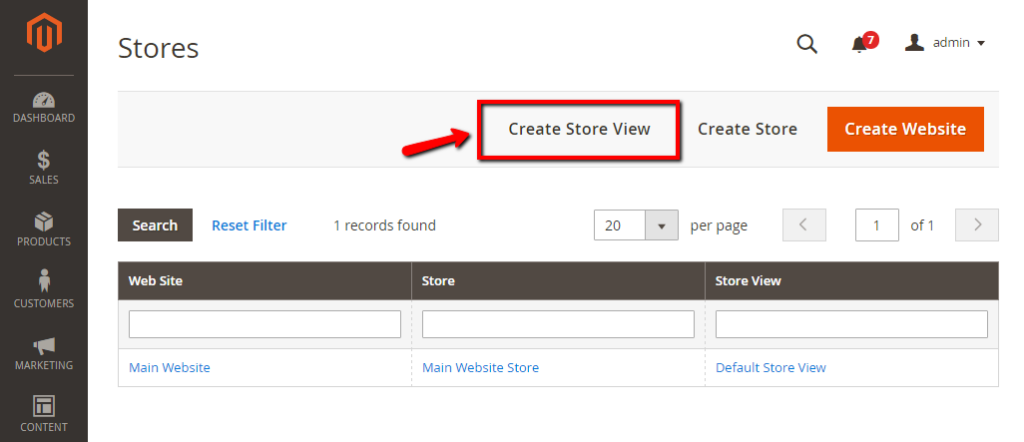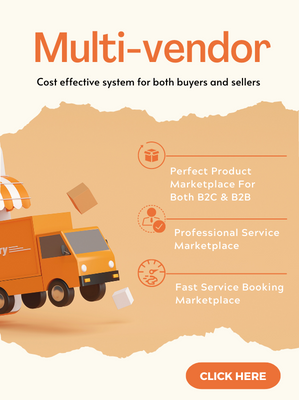Store view, stores, and website in Magento 2 are fundamental factors for store owners to start their own e-commerce business. Whenever you are looking to implement the original store looks or differentiate the benefits of your website, Magento is an excellent choice. Today, we will show you more absolute knowledge about Magento websites, multi-stores, and store views to point to the major similarities and differences and help you with your further decision.
What is the difference between website, store, and store view?

One of Magento’s attractive advantages is the opportunity to manage multiple websites and stores within just one installation. Magento 2 has a 4-level hierarchy: Global, Website, Store, and Store View. Let’s take a closer look at the difference between them and their opportunities.
Global
Global is the highest level in the Magento pyramid. You can set the only three options that will be the same for all stores:
- Stock – configure the main product settings;
- Price – define the same price for the products in all stores;
- Purchaser – merge all store customer data into one big database for all websites.
Websites
Magento installations begin with a single website which by default, is named Main Website. You can also create multiple websites for a single installation, each with its own IP address and domain.
- The benefits of Magento’s website are having unique customers and order bases. Having a separate customer base is not the only plus – as an owner store, you can share customer accounts with all sites. You can separate users into completely different sets to work with them more effectively.
- The website enables selecting any payment and shipping methods that you need for your online store. The same works for the currency.
- When you need to input many prices, you can make it easily through the configuration setting. It is also possible to share the price globally.
- The key difference between Magento’s Website and Store is that the first one includes only customer data with no products and categories.
Stores

A single website can own multiple stores, each with its own main menu. The stores share the same product catalog but can have a different choice of products and designs. All stores under the same website share the same Admin and checkout. There is something Magento 2 multi-stores cannot function such as:
- cannot have specific payment/ shipping methods for each store
- cannot adjust the tax structures within Magento’s multiple stores
- cannot manage a separate inventory with stores
- You can’t manage ANY configuration settings between multiple stores
With Magento stores, it is more appropriate for selling various types of products, widening the volume of business under an easy-to-follow structure. Despite these disadvantages, Magento 2 multi-stores provide users with a lot of benefits that are very necessary for your business development.
- Allow selling different product types on the same web domain. Moreover, you can also manage all item’s statuses on a single admin panel.
- Multi-stores can offer different product categories.
- Include necessary attributes such as check-in, check-out, selective pricing, and add-to-cart option.
- Easy to create Magento multi-stores. You don’t have to log in to vast admin panels to manage purchases and customer behavior.
Store Views
Each store that is available to buyers is presented according to a specific view. Originally, a store comes with a single default view. Additional store views can be added to support various languages, or for other purposes. Customers can use the language chooser in the header to adjust the store view.
- Store View is suggested for solving multiple languages at your online store. It operates in this way: one Store View is per language. So, if you want your customers to change quickly between one or more languages, Store View is appropriate for you. It is great for multinational online stores.
- This function is also crucial for all those who want to have different store themes and initial designs. In other words, Store View will solve everything by applying the design/template directory on the server or language pack.
- As a Magento store owner, you can always enjoy granular localization support. It considers not only languages but the locations of your customers.
- This feature is focused on changing the facing text of a setting and other elements of design, its features are isolated.
- No specific payment methods are allowed for every store view.
- No separate shipping methods are included.
- Category structure will keep the same.
- Finally, you won’t view the majority of reports based on store view segmentation.
- The key disadvantage might be the need for a native speaker to rewrite your product information in a particular language. However, with the variety of selection today, it shouldn’t turn some issues
- Store View is simply a way your website is being presented/positioned.
How to Create a New Store View in Magento 2

In Magento 2 you can build a website with multiple stores that differ in design, purpose, items, etc. Store views likewise are the variations of the same store in various languages.
Every Magento 2 store originally has a default store view. So, you generate other store views in order to support different languages in your store to admit customers from different countries to adjust your Magento 2 store in their preferred language.
Go to the Admin panel, and click Stores. In the Settings section, choose All Stores.
- Click Create Store View button and make the following steps
- In the Store field, choose the parent store of this view
- In the Name field, enter the name for this store view
- In the Code field, enter the code in lowercase characters to identify the view.
- In the Status field, choose Enabled to activate the view
- In the Sort Order field, enter the number to decide the sequence in which this view is listed with other views.
- When done, click Save Store View.
Conclusion
That’s all we want to share with you through this post. Magento has lots of brilliant features, one of them is that you can manage multiple sites and store them in one installation. Therefore, if you can understand the difference between them, it can help you a lot when starting an eCommerce store. If you want to make this process become faster and easier, hiring experts will assure your success. We are here with the Magento Website Development service which will solve your problem. Contact us to receive our consultation.



